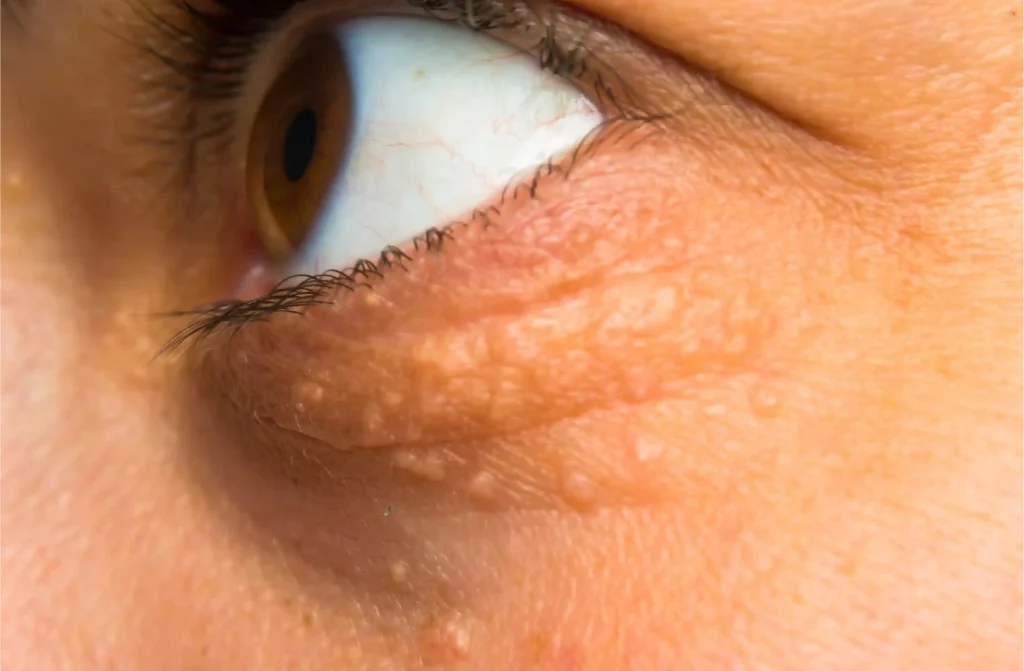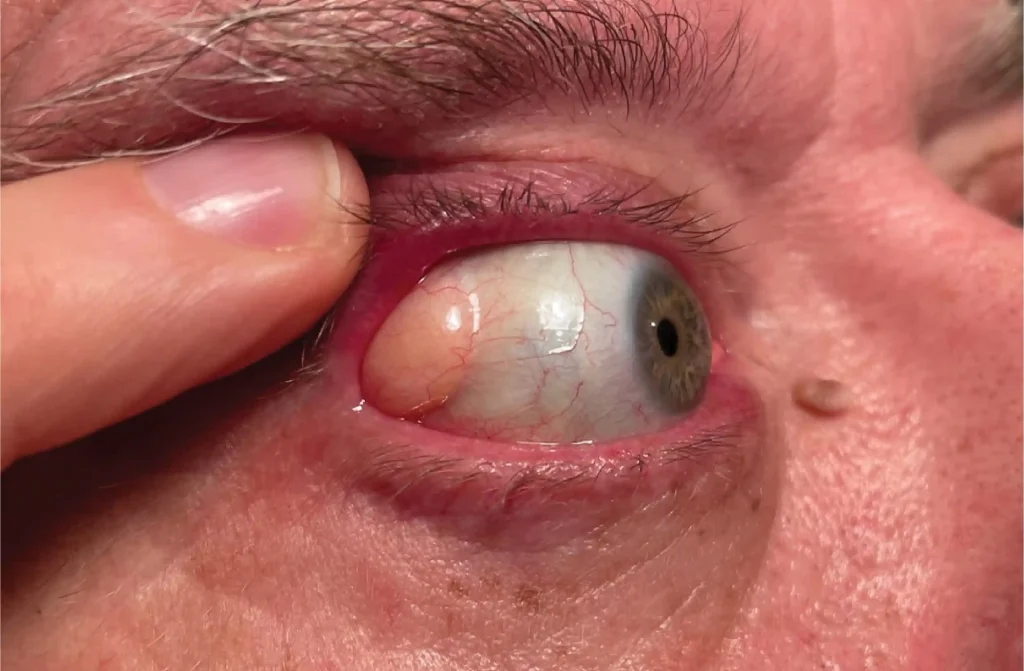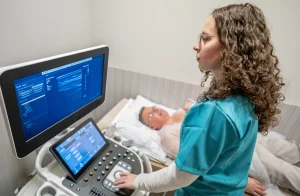What if your face was silently trying to warn you about a hidden health issue—one that could impact your heart, your life, and your future? Most of us are used to the idea that cholesterol is something revealed by a blood test or detected through doctor visits. But what if I told you that signs of high cholesterol could be right before your eyes, literally?
Yes, your face could be giving off subtle signals that something isn’t quite right with your cholesterol levels. These warning signs are often so easy to miss that many overlook them until it’s too late. However, being aware of these clues could help you take control of your health before it becomes a bigger problem.
In this blog, we’ll uncover the surprising facial signs of high cholesterol and why understanding them is more important than ever. Ready to find out what your face might be trying to tell you? Let’s dive in.
How Does High Cholesterol Affect Your Skin?
You may not associate cholesterol with your skin, but the connection is more significant than you think. High cholesterol doesn’t just stay in your bloodstream; it can manifest itself in various ways, and your skin can be one of the first places to show the warning signs. When cholesterol levels spike, it leads to fatty deposits in your blood vessels, which can affect circulation and the health of your skin over time.
But how does this happen? Here’s the key: high cholesterol can impact the tiny blood vessels that nourish your skin, leading to poor circulation. Without proper blood flow, the skin doesn’t receive enough oxygen and nutrients. This can cause subtle changes, including discoloration, unusual bumps, and other signs of something going wrong beneath the surface.
These skin-related symptoms are not just cosmetic issues; they’re signals from your body that should never be ignored. They’re essentially an early warning system, alerting you to potentially dangerous cholesterol levels that could lead to serious conditions like heart disease or stroke if left unchecked.
Now that you understand the connection, it’s important to know exactly what to look for. So, what are these warning signs that may be showing up on your face? Let’s explore the specific facial symptoms of high cholesterol next.
What Visible Signs Are Seen on Your Face Due to High Cholesterol?
Believe it or not, your face can reveal more than just emotions—it can be an early indicator of high cholesterol. While these signs may be subtle, they shouldn’t be overlooked. Here are the key facial symptoms that might signal elevated cholesterol levels:
1. Xanthelasma (Yellowish Patches Around the Eyes)
One of the most telling signs of high cholesterol is xanthelasma, which appears as yellowish, fatty deposits around the eyes, particularly on the eyelids. These small, yellowish plaques develop when cholesterol builds up beneath the skin. While they’re generally painless, their presence often suggests dangerously high cholesterol levels in the blood. If you notice these patches, it’s a good idea to get your cholesterol levels checked immediately.

2. Cholesterol Bumps
These are small, painless lumps known as xanthomas, which can appear on various parts of the body, including the face. When found near the eyes or nose, these bumps are often a red flag for lipid imbalances like high cholesterol. Xanthomas can vary in size and shape, but they’re typically soft and have a yellowish tinge.

3. Pale or Bluish Skin Tone
High cholesterol can impair blood circulation, which may lead to a pale or even bluish tint to your skin, particularly around the face. Poor circulation means your skin isn’t getting enough oxygen and nutrients, leading to this discoloration. While this isn’t a definitive sign of high cholesterol, when combined with other symptoms, it may indicate something more serious.

4. Fatty Deposits in the Cornea (Arcus Senilis)
Another potential sign is arcus senilis, a white or gray ring that appears around the cornea (the colored part of the eye). This is caused by lipid deposits and is most commonly seen in people over 50, but when it appears in younger individuals, it could be a strong indicator of high cholesterol.

5. Skin Tags
Although not a direct symptom, skin tags can sometimes be linked to metabolic issues, including high cholesterol and insulin resistance. If you notice an increase in these tiny, benign growths, particularly around your eyelids or neck, it may be worth investigating your cholesterol levels.

What Are the Main Reasons Behind High Cholesterol on the Face?
The appearance of high cholesterol on your face doesn’t happen overnight. Several factors contribute to this silent buildup, and understanding the underlying causes can help you take steps to prevent or manage it. Here are the main reasons why cholesterol levels might rise to the point where they show visible signs on your face:
1. Poor Diet
One of the most significant contributors to high cholesterol is an unhealthy diet. Consuming foods high in saturated fats and trans fats, such as fried foods, processed snacks, red meats, and full-fat dairy products, can lead to increased LDL (low-density lipoprotein) cholesterol, also known as “bad” cholesterol. This excess LDL cholesterol can accumulate in the bloodstream and deposit itself in the skin, manifesting as xanthelasma and other signs.
2. Lack of Physical Activity
A sedentary lifestyle is another common cause of elevated cholesterol levels. Regular physical activity helps raise HDL (high-density lipoprotein) cholesterol, which is the “good” cholesterol that helps remove excess LDL from the bloodstream. Without exercise, LDL levels can rise, leading to fatty deposits both internally and externally, including around the face and eyes.
3. Genetics (Familial Hypercholesterolemia)
For some people, high cholesterol isn’t just about lifestyle—it’s inherited. Familial hypercholesterolemia is a genetic condition that leads to abnormally high cholesterol levels from a young age. People with this condition are more likely to develop visible signs of high cholesterol on their face, such as xanthomas or arcus senilis, even if they maintain a healthy lifestyle.
4. Obesity
Being overweight or obese can significantly contribute to elevated cholesterol levels. Excess body fat can increase LDL cholesterol while lowering HDL cholesterol. This imbalance raises the likelihood of cholesterol deposits forming in various parts of the body, including the skin on the face.
5. Smoking
Smoking has a direct impact on your cholesterol levels. It reduces the amount of good HDL cholesterol and damages the lining of your blood vessels, making it easier for cholesterol to build up. The toxic chemicals in cigarettes also contribute to the formation of fatty deposits in the blood vessels, which can manifest as cholesterol bumps and patches on the skin.
6. Underlying Health Conditions
Certain medical conditions, such as diabetes, hypothyroidism, and kidney disease, can affect cholesterol metabolism in the body. These conditions may lead to higher LDL cholesterol levels or make it harder for the body to clear cholesterol effectively. Over time, this can result in visible signs like xanthelasma or other cholesterol-related skin issues.
7. Age and Hormonal Changes
As we age, cholesterol levels naturally tend to rise, which can increase the risk of seeing signs on your face. Hormonal changes, especially during menopause, can also impact cholesterol levels, as estrogen helps keep LDL levels in check. A drop in this hormone can contribute to the buildup of cholesterol, including the deposits visible on the skin.
Prevent heart problems before they start – Schedule a preventive checkup
Contact UsHow Can You Manage Symptoms of High Cholesterol on Your Skin?
If you’re noticing signs of high cholesterol on your face, it’s not just a cosmetic concern—it’s a signal to take action. Managing these symptoms requires addressing the root cause: high cholesterol levels in your bloodstream. Fortunately, there are several ways you can reduce these visible signs and improve your overall health. Here’s how to manage the symptoms of high cholesterol on your skin:
1. Adopt a Heart-Healthy Diet
Diet plays a crucial role in managing cholesterol levels. Focus on eating foods that promote healthy cholesterol levels:
- Increase fiber: Foods rich in soluble fiber, like oats, beans, and fruits, help lower LDL cholesterol by preventing its absorption into the bloodstream.
- Healthy fats: Replace saturated and trans fats with healthy fats, like those found in olive oil, avocados, and nuts. Omega-3 fatty acids, found in fish like salmon, can also help improve cholesterol levels.
- Limit cholesterol-heavy foods: Reduce consumption of high-cholesterol foods such as processed meats, full-fat dairy, and fried foods. Opt for lean protein sources like chicken, turkey, or plant-based alternatives.
A well-balanced diet not only helps lower cholesterol but can also improve the appearance of your skin, reducing fatty deposits and other signs linked to high cholesterol.
2. Exercise Regularly
Regular physical activity is one of the most effective ways to raise HDL (“good” cholesterol) and lower LDL (“bad” cholesterol). Try to incorporate at least 150 minutes of moderate exercise, such as brisk walking, swimming, or cycling, into your weekly routine. Exercise improves circulation, which benefits not only your internal health but also the appearance of your skin, helping to prevent visible signs like xanthelasma or cholesterol bumps.
3. Medications to Control Cholesterol
If lifestyle changes alone aren’t enough, your doctor may recommend medications to help lower cholesterol levels. Statins are the most commonly prescribed medication for lowering LDL cholesterol. These drugs can prevent further fatty deposits on the skin and even reduce the size of existing ones. Other medications like niacin, fibrates, or PCSK9 inhibitors may also be prescribed depending on your condition.
4. Quit Smoking
Smoking has a direct negative impact on your cholesterol levels, decreasing HDL and increasing LDL cholesterol. Quitting smoking can not only help balance these levels but also improve blood flow, benefiting your skin’s overall health. Over time, quitting can prevent the formation of cholesterol deposits on the face and other parts of the body.
5. Manage Underlying Health Conditions
If you have underlying conditions like diabetes or hypothyroidism that contribute to high cholesterol, it’s crucial to manage these effectively. Work closely with your healthcare provider to keep these conditions under control, as doing so can help prevent further cholesterol buildup and reduce the appearance of cholesterol-related skin issues.
6. Consider Cosmetic Treatments
In cases where xanthelasma or other cholesterol-related skin symptoms are particularly noticeable, cosmetic treatments may help. Procedures such as laser therapy, cryotherapy (freezing the deposits), or surgical removal can be used to treat visible cholesterol deposits. However, these methods don’t address the underlying cholesterol issue, so they should be used in conjunction with lifestyle changes and medication to manage your cholesterol levels.
7. Stay Consistent with Checkups
Routine cholesterol checks are essential, especially if you’re prone to high cholesterol or have a family history of it. Regular blood tests will help you monitor your cholesterol levels and ensure that your treatment plan is working. Early detection of high cholesterol can prevent the development of more severe symptoms, including those visible on your skin.
8. Hydration and Skincare
Maintaining healthy skin through proper hydration and skincare routines can also help minimize the appearance of cholesterol-related skin changes. Although this won’t directly reduce cholesterol, well-hydrated and nourished skin can improve overall appearance and resilience, making it less prone to visible signs of damage.
Key Takeaways
High cholesterol doesn’t just affect your heart—it can show up on your face in subtle yet significant ways. From yellowish patches around your eyes to small cholesterol bumps, these signs are your body’s way of warning you about elevated cholesterol levels.
If you’re concerned about cholesterol or have noticed any of these warning signs on your face, don’t wait. At Atlantic Cardiovascular Services, we specialize in comprehensive heart health care, helping you manage cholesterol levels and reduce your risk of cardiovascular disease. Schedule your consultation today and take the first step toward a healthier future.







